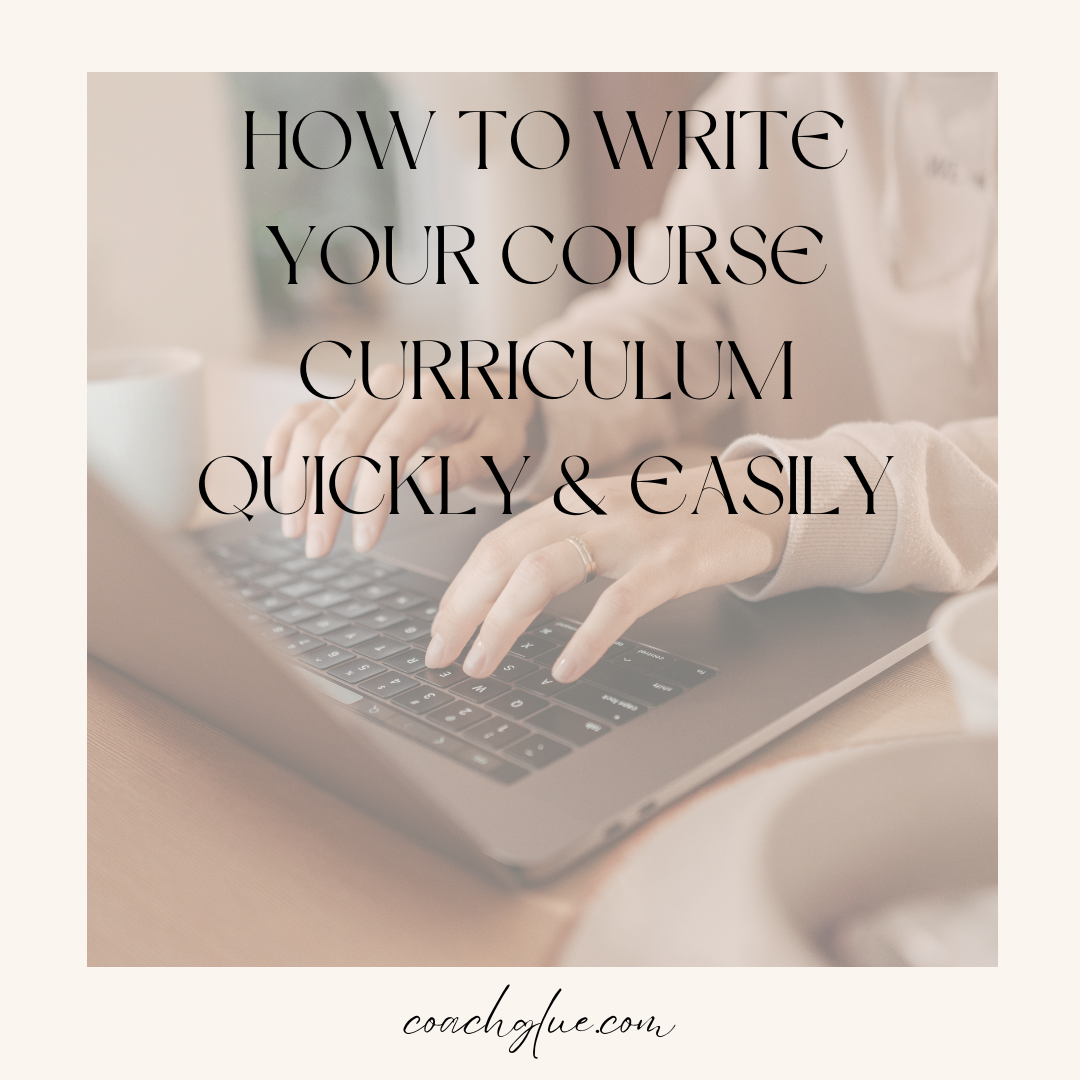You’ve picked out an awesome (and super valuable) course topic, crafted the perfect scroll-stopping (and uber-catchy) course name and can’t wait to start creating your course content.
Except you do have a few lingering questions.
Like…
Where in the world do you start? (Surely you shouldn’t just flip on the ring light and start jabbering away at the camera, right?)
How do you know what specific lessons to cover in your course so it’s impactful, but not overwhelming?
And how do you choose how to present that content, so people actually consume it (and get results from it)?
Enter, a course curriculum.
While some course creators swear by creating course content on the fly, we absolutely recommend coming up with a course curriculum before diving into recording (or writing, or speaking) your lessons.
We believe a well-crafted course curriculum is arguably one of the most important pieces of an online course.
If done right, it will help you gain clarity on what you want to teach, help set expectations for your students and even help you whip up a dazzling sales page.
Why Should You Create a Course Curriculum?
Before we dive into why, let’s make sure we’re on the same page about what a course curriculum is. In essence, a course curriculum is a document that outlines your course modules, including every single lesson and subtopics covered in your course, as well as the order in which they will be taught. It also includes other information that might be useful to your students (like links to resources or glossaries), as well as helps you map out supplement material (like follow-along workbooks).
Why should you have a course curriculum, then? There are several reasons:
1) A curriculum helps you plan and organize your course content. This will ensure you don’t forget important information and that your content is presented in a logical order. (And as a result? Your students will see faster, easier and more radical results. And who doesn’t want that, right?)
2) A curriculum helps you communicate what students can expect from your course. When students know what topics will be covered and in what order–and can see this right on your sales page, before purchase–they can make a better-informed buying decision and figure out whether a course is ‘right’ for them.
3) On that same note, a clear curriculum is an easy way to promote your course to potential students. If you have a well-organized and clearly laid-out curriculum that you can plop right on your sales page, it’ll help your course (and you in general). Look more well-thought-out and professional.
All that said, creating a curriculum may seem like a daunting task, but the good news is it actually doesn’t have to be. Below, you’ll find 8 effective tips to help you write your course curriculum quickly and easily.
How to Create Your Course Curriculum
1) Start with the basics. First, decide on the overall course objective. What do you want your students to learn by the end of your course? What’s the ultimate result or outcome you want them to achieve? Knowing the ultimate goal can then help you determine which you need to cover in order to get your student from where they are before they buy, to where they want to be.
2) Write out the individual steps needed to achieve the result. You can work backward from the ultimate goal. What exact steps would they need to take to get from where they are now to where they want to be? Think about how each step will get them closer to the ultimate goal. Each step can then easily become its own module.
3) After you know your overall modules, it’s time to dig into the nitty gritty. To do this, think about the individual, smaller steps your student would need to take to get from where they are at the beginning of the module to where they need to be at the end–and before they go onto the next module. Write out these smaller steps in order. These will become the lessons or subtopics within each module.
4) Create an outline for each module. Within each outline, include the module name, lesson titles and topics, 1-3 learning objectives and a list of 3-5 key takeaways you want your student to get from the module. (Keep in mind each module should–at minimum–cover the what, the how and the why behind the topic. For example, a module on email welcome sequence should explain what an email welcome sequence is, how to go about creating one and why each step is necessary. )
5) Finally, decide on how you can best present the information in each module to your students. As you create your outlines, think about what content would best support each topic. This could video lectures, articles, assignments, exercises or a supplementary workbook, etc. Other information you might want in your curriculum includes:
-
- History of your chosen topic
- A bibliography with recommend reading on the topic
- A glossary of terms
- Detailed instructions for any assignments or projects related to the topic
- A list of additional resources (websites, social media accounts, people, etc.) that students can use to learn more about the topic.
6) Compile this information into an official curriculum document.
7) Review the curriculum as a whole to ensure everything flows smoothly and that there are no gaps in coverage. Pro tip: Have an outsider (or someone with a little–but not too much–knowledge on the topic) read it over. Is anything confusing? Are any necessary steps missing? It can be hard for us to see these gaps because we’re already so familiar with the topic.
8) Go back and adjust as needed.
Just follow the steps above and you can create a comprehensive and well-organized course curriculum document in no time.
Looking for an even faster and easier way to write your course curriculum? Look no further! Here at CoachGlue we offer 100% done-for-you courses with professionally-written modules you just have to take and tweak–no creating from scratch required! Check out the CoachGlue VIP club and all the details here.



